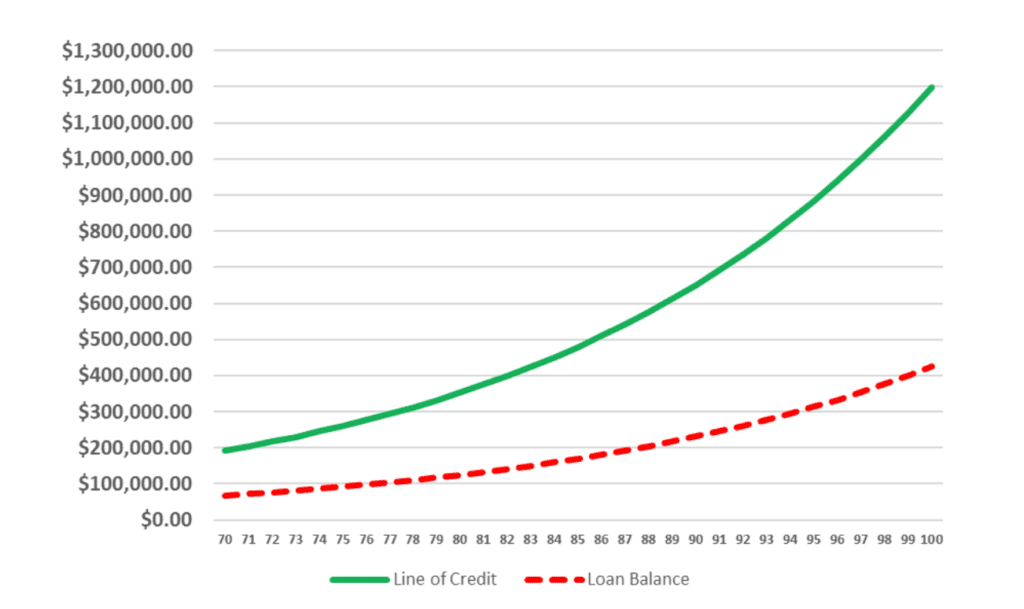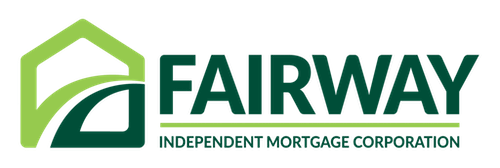Advantages of a Reverse Mortgage Loan vs. a HELOC and a Home Equity Loan

For homeowners aged 62+, a Home Equity Conversion Mortgage (HECM, commonly called a reverse mortgage) loan offers some distinct advantages over other types of home-equity-release loans.
According to a survey conducted by Clever, about half (51 percent) of retirees believe they will outlive their savings. Perhaps even more worrisome, the study also found that 65 percent of retirees say they are not financially secure. They may be facing any number of financial challenges, including how to best combat recent jumps in the prices of food, gas, and just about everything else.
For most homeowners aged 62 and older, home equity represents the largest portion of their overall net wealth, usually dwarfing their other assets (e.g., retirement savings). Home equity is simply your home’s value minus your remaining mortgage balance(s). While home equity is good, unless the home is sold or the equity is tapped, it is of essentially no functional value to a homeowner in retirement because it is generally very illiquid.
In retirement, it may be prudent to ensure home equity is readily available as cash to satisfy unexpected (or planned) purchases or shortfalls in cash. A key that can unlock a portion of trapped home equity — without having to actually sell or relinquish ownership of the home — is for the homeowner to take out a loan against the equity.
Three common home-equity-release loans available today for senior homeowners are the Home Equity Line of Credit (HELOC), Home Equity Loan (HEL), and the Home Equity Conversion Mortgage (HECM). Each of these financial instruments uses the home as collateral and allows the borrower to use the funds for any purpose, but they work in different ways and have different implications.
A Home Equity Conversion Mortgage is the only one of the forementioned loan types that is specifically designed for homeowners aged 62 and older and their unique needs. The borrower can take the loan proceeds as a one-time lump sum disbursement (similar to a Home Equity Loan), a line of credit to use as needed (similar to Home Equity Line of Credit), or fixed monthly advances (similar to an annuity).
Curious what you may qualify for? You can use our free reverse mortgage calculator!
Advantages of a HECM compared to a HELOC and a HEL
1. A HECM offers flexible repayment options.
HECM
With a HECM, the borrower can significantly increase their cash flow — not only from the loan proceeds they receive (e.g., a lump sum disbursement at closing or by drawing available proceeds as needed from a line of credit) — but also from the flexible options they have to repay the borrowed money. The borrower can repay as much or as a little toward the loan balance each month as they want, or they can choose to make no monthly mortgage payment at all. Of course, they still must maintain the home and pay property taxes and homeowners insurance.
The loan balance doesn’t have to be repaid until the last remaining borrower moves out or passes away and is typically satisfied through the sale of the home. If the borrower’s heirs want to purchase the home, they can by paying 95% of the appraised value or paying off the loan balance, whichever is less. They can also choose to refinance the home into their name or simply walk away (in which case the home is usually sold on the open market).
HELOC
With a HELOC, the borrower can draw funds as needed from the available credit line and is typically required to make monthly payments on just the interest that is accrued for a set number of years (e.g., the first 10 years) during what is called the draw period. For borrowers who are aged 62+, the burden of required monthly payments can diminish cash flow during a phase of their life when income tends to be fixed or dwindling.
After the draw period, the HELOC transitions into the repayment period for a set number of years (e.g., 20 years), during which both principal and interest payments are required. This can result in the borrower experiencing payment shock, as required payments can be significantly higher during the repayment period, which can further restrict a senior borrower’s cash flow for the duration of retirement.
HEL
With a HEL, the borrower receives a one-time lump sum disbursement of the loan proceeds at closing. The interest rate and monthly payments are fixed for the duration of the loan — typically five to 20 years. Monthly payments toward the loan balance are required, which, like with a HELOC, can reduce a senior borrower’s cash flow throughout retirement.
2. The unused portion of the HECM credit line grows over time.
With a HECM line of credit, as long as the borrower does not fully draw the HECM loan, the unused portion of the credit line grows at the same compounding interest rate as the loan balance (independent of swings in the value of the home) — giving the borrower access to even more funds over time. For this reason, it can be valuable to establish the HECM line of credit sooner rather than later.
Here’s an example of how an unused line of credit grows over time versus a loan balance in which no voluntary prepayments are made. With a HELOC, the unused portion of the line of credit does not grow over time.
- Home value: $600,000
- Age: 70
- Expected Interest Rate: 5.625%
- Initial Principal Limit: $259,800
- Initial loan balance: $68,000 including payoffs and closing costs
- Initial Line of Credit: $191,800

This information is provided as a guideline and does not reflect the final outcome for any particular homebuyer or property. The actual reverse mortgage available funds are based on current interest rates, current charges associated with loan, borrower date of birth (or non-borrowing spouse, if applicable), the property sales price and standard closing cost. Interest rates and loan fees are subject to change without notice. Following the closing of the home purchase, no further principal or interest payments will be required as long as one borrower occupies the home as their primary residence and adheres to all HUD guidelines of loan. Borrower must remain current on property taxes, homeowner’s insurance (and homeowner association dues, if applicable), and home must be maintained.
3. There isn’t a tight, preset window of time to draw funds from the HECM line of credit.
With a HECM line of credit, as long as the borrower meets the loan terms, they can always draw available funds from the line, pay them down, then use the funds again — or let them grow again.
With a HELOC, while the credit line is similarly reusable upon repayment, there is a typically a 5- to 10-year period (the draw period), which is the only window of time when the borrower is permitted to withdraw available funds.
4. The HECM borrower (or their heirs) can never owe more than the home is worth at the time of loan maturity.*
A HECM is a non-recourse loan insured by Federal Housing Administration (FHA). Non-recourse means even if the loan balance exceeds what the home is worth when the loan is due, the sale of the home will satisfy the loan and neither the borrower nor their heirs will not be responsible for paying the difference. Note: If the home value is greater than the loan balance at the time of loan maturity, the borrower (or their heirs) would keep any remaining proceeds after the loan is paid off.
A HELOC and a HEL are generally not considered non-recourse loans and offer no such protections from the FHA.
5. A HECM is generally easier for applicants aged 62+ to qualify for (minimum credit requirements).
With a HECM, there is no minimum credit score requirement. The lender will conduct a financial assessment of the applicant’s credit history, property charge history, and monthly residual income when deciding whether to approve the loan. The lender will seek to determine if the borrower has the means to meet the loan terms, which include paying the ongoing property-related taxes and insurance.
With a HELOC and HEL, a FICO score of 620+ is generally required for the prospective borrower to qualify. The lender will seek to determine if the borrower has the means to repay the loan balance on a monthly basis — as well as pay other property-related charges, such as taxes; and repay liens against the home (if any), such a first lien mortgage — for the duration of the loan.
6. The HECM credit line cannot be frozen, reduced, or canceled.
With a HECM line of credit, as long as you meet the loan terms, no one — including the lender — can freeze, reduce, or cancel your line of credit, even if your financial situation suddenly changes or your home drops in value.
A HELOC offers no such protections.
HECM Loans
If you are interested in learning more about HECM loans and if one might be right for you or a loved one, Fairway Independent Mortgage Corporation can help. Connect with us today.
*There are some circumstances that will cause the loan to mature and the balance to become due and payable. Borrower is still responsible for paying property taxes and insurance and maintaining the home. Credit subject to age, property and some limited debt qualifications. Program rates, fees, terms and conditions are not available in all states and subject to change.
Copyright©2022 Fairway Independent Mortgage Corporation (“Fairway”) NMLS#2289. 4750 S. Biltmore Lane, Madison, WI 53718, 1-866-912-4800. All rights reserved. Fairway is not affiliated with any government agencies. These materials are not from HUD or FHA and were not approved by HUD or a government agency. Reverse mortgage borrowers are required to obtain an eligibility certificate by receiving counseling sessions with a HUD-approved agency. The youngest borrower must be at least 62 years old. Monthly reverse mortgage advances may affect eligibility for some other programs. This is not an offer to enter into an agreement. Not all customers will qualify. Information, rates and programs are subject to change without notice. All products are subject to credit and property approval. Other restrictions and limitations may apply. Equal Housing Opportunity.

